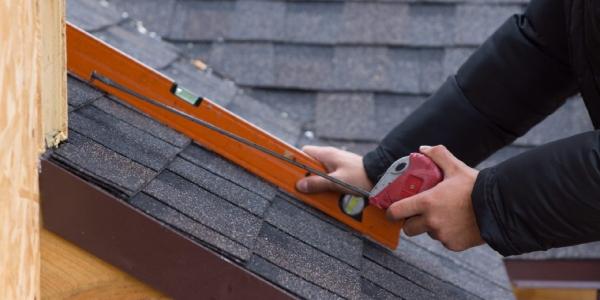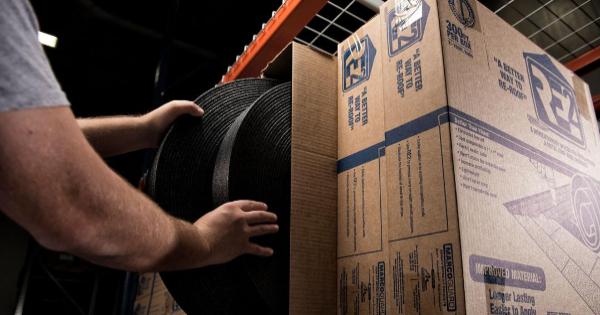UP TO THE MINUTE
Guide to Measuring Roof Pitch

By RPS Metal Roofing.
Finding out the measurement of a roof pitch allows you to know the steepness of the roof itself.
Learning how to measure roof pitch is a valuable and necessary skill for contractors. Typically measured in degrees, the pitch can also be measured as a ratio depending on the preference of the contractor. It is common to see roofs with a pitch somewhere between 3/12 and 12/12 measurements. A simple way to understand this number sequence is to know that the first number is the vertical rise and the second is equal to the horizontal run. With this basic information, you’re ready to dive deeper into the art of accurately measuring roof pitch in both degrees and ratios with this helpful guide from RPS Metal Roofing.
Roof pitch can be calculated in degrees or as a ratio.
Geometry is important for measuring roof pitch because it provides the basis for a number of other measurements. The shape and slope of a roof can be measured by using geometry, which is the study of space and how it relates to objects in that space. Geometry is necessary for measuring the angle of a roof’s slope, as well as the length and width of the structure itself.
Roof pitch can be calculated in degrees or as a ratio. You will need to use a roof-pitch calculator to measure roof pitch in degrees. Most of these calculators are easy to use and come with instructions on how to get the most accurate measurements from them. Once you have used the calculator, write down your results so that you can calculate this number later if needed.
If you want to measure your roof’s pitch without a calculator, another option for estimating its slope is measuring it as a ratio (or percentage). To do this, divide the rise by the run, then multiply by 100%. For example: If your rise is 4 feet (1 meter) and run is 8 feet (2 meters), divide 4 by 8 and multiply by 100% — this gives us 50%, which indicates that our roof has less than 45° pitch!
Most roofs have a pitch between 3/12 and 12/12.
There are a few ways to measure your roof pitch, but the most common method is to figure out the rise and run of your roof. The rise is measured by taking the straight-line distance from one roof’s edge to its highest point, while the run is measured by taking the straight-line distance from one side of your house to another.
For example, if you have an L-shaped house with an exterior wall that runs along one edge and then turns 90 degrees before connecting with another exterior wall, then there will be two rises: one at each end where those two walls meet. In this case, both rises would be equal — you’ve just gone up straight instead of turning at any point during those two spans. However, if you’re measuring inside corners or curved edges (which would only happen with houses built on curved lots), these areas will not have any measurable ‘rise’ because there was no change in elevation as you moved down them; all we’ll see here are flat surfaces instead!
On top of that: how do we account for roofs that aren’t perfectly flat? A great example would be when we look at pitched roofs like gabled barns or shed roofs which often feature large overhangs! If these overhangs were removed from our measurements, then what kind?
The first number always equals the vertical rise, and the second number always equals the horizontal run.
Understanding pitch is important to get the correct measurement. The first number always equals the vertical rise, and the second number always equals the horizontal run. A 10-in pitch means that for every 10 inches in height, there will be 1 inch of fall (rise). For example, if you have a 6-feet tall wall, then it would have 60 inches of rise and 5 feet of run. In other words:
Vertical Rise = Height X Pitch/100 = 6 feet x 1/100 = 0.006 feet (6 inches)
Horizontal Run = Length X Pitch/100 = 5 feet x 1/100 = 0.005 feet (5 inches)
If a roof’s vertical rise is 9 inches, its horizontal run is 9 inches, and its pitch equals 9/9.
When you’re measuring a roof, you’ll need to know both the vertical rise and horizontal run of the area you’re measuring. Once you have those measurements, use a roof pitch calculator to convert them into degrees of pitch. This will tell you how steeply pitched your roof is, which can help plan future projects.
For example, if a roof’s vertical rise is 9 inches and its horizontal run is 9 inches (9/9), then it has a pitch of 9/9 or 1:1 — this means that one inch off the ground would take 2 inches horizontally across the top surface of your roof.
Use a roof-pitch calculator on your phone or computer to convert this to a degree measurement.
When you’re converting a roof pitch from one measurement to another, it’s important to use a roof-pitch calculator. A roof-pitch calculator will allow you to enter the measurements for both your current and desired pitch, and then it will automatically calculate the degree measurement that corresponds with the desired pitch.
It ensures that you get an accurate measurement. The degree measurement is not something you can just guess at — it’s a precise calculation of how steep the slope of your roof is. Getting an inaccurate measurement could have consequences ranging from costly reroofing jobs to leaks that cause damage to interior spaces. It allows you to compare different pitches to choose which is best suited for your needs and budget.
With this information, you can plan your next roofing project with confidence.
Knowing the pitch of your roof is important for several reasons. First, you’ll be able to select the right type of shingles for your home, which will help ensure that it lasts as long as possible. Second, knowing this information helps you better predict how much water runoff from heavy rains will impact your property. Thirdly, if you plan on having renovations or repairs done on your home in the future and want to ensure that everything goes smoothly (and safely), knowing how steeply sloped the roof is will give you an idea of what kind of scaffolding may need to be installed during construction work.
Learn more about RPS Metal Roofing in their Coffee Shop Directory or visit rpsmetalroofing.com.
Original article source: RPS Metal Roofing




















Comments
Leave a Reply
Have an account? Login to leave a comment!
Sign In